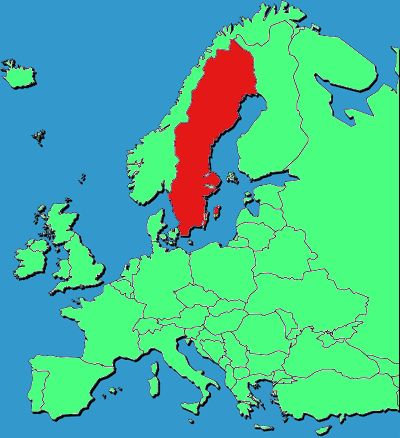
Circle the area on this map

C. In the 1814 peace treaty which ended the Swedish–Norwegian War, Norway accepted the king of Sweden as its monarch and the king recognized Norway's democratic constitution and independent parliament. The union lasted until 1905 when Norway peacefully gained its independence.
D. European powers agreed to permanently recognize Swiss neutrality in 1815, but Switzerland had a civil war in 1847.
B. The Baltic Sea lies between Sweden and mainland Europe. At its height, the Swedish Empire covered Finland, Estonia and Latvia as well as parts of Russia and Germany.
A. English and Swedish are both Germanic languages. The ancestor of all Germanic languages first evolved in southern Sweden and Denmark, Sweden's southern neighbor. Finnish, Russian and Welsh are derived from different “proto-languages.”